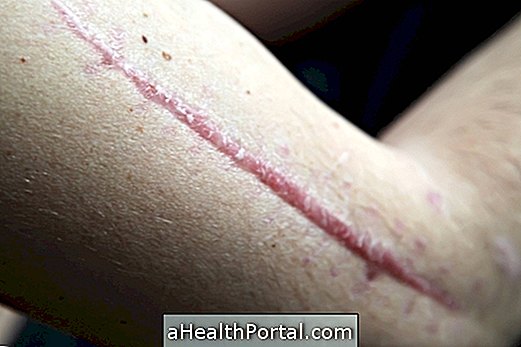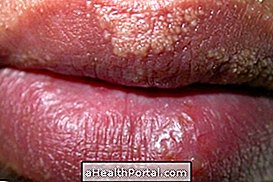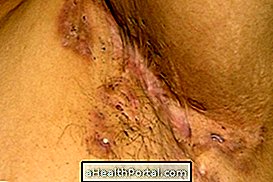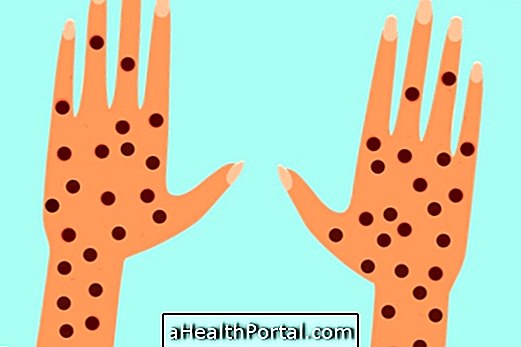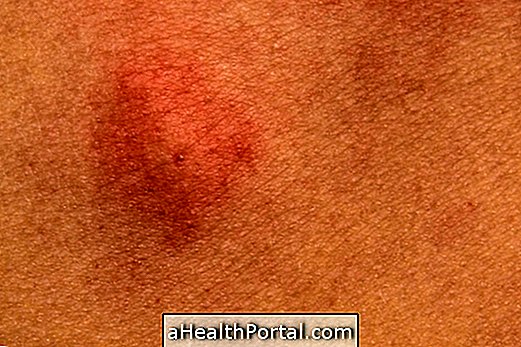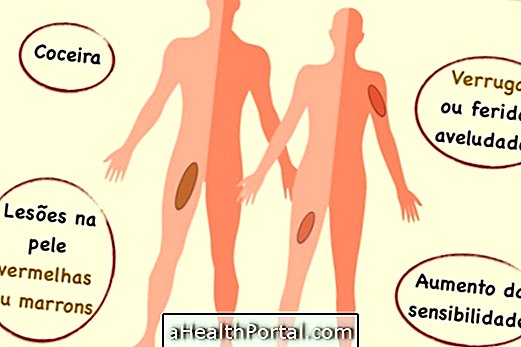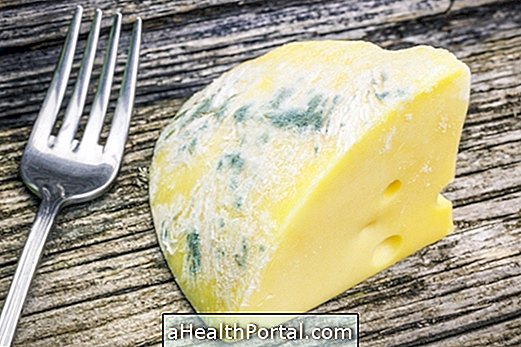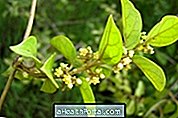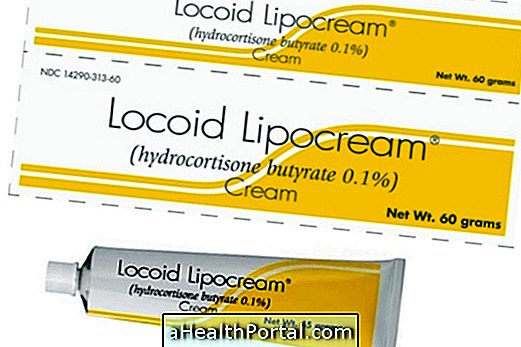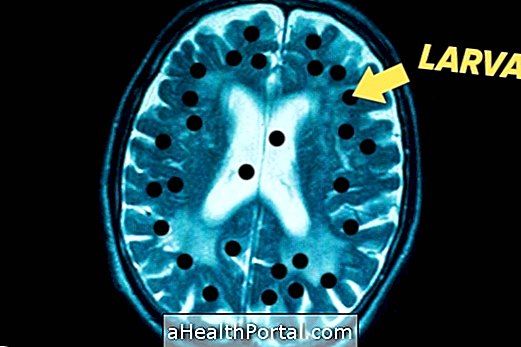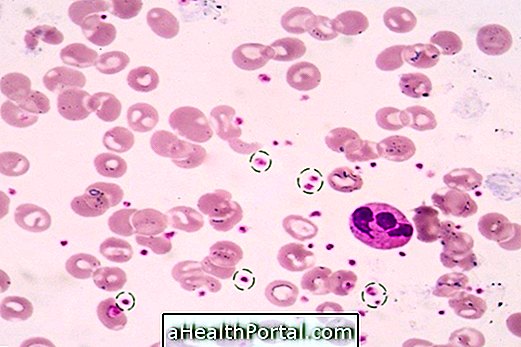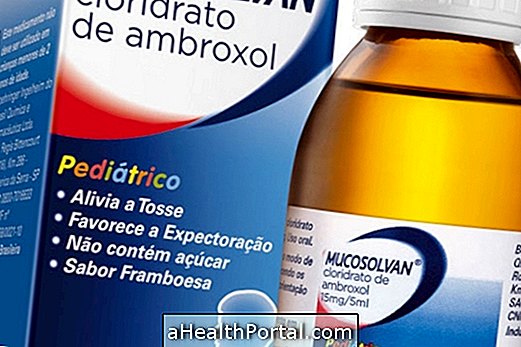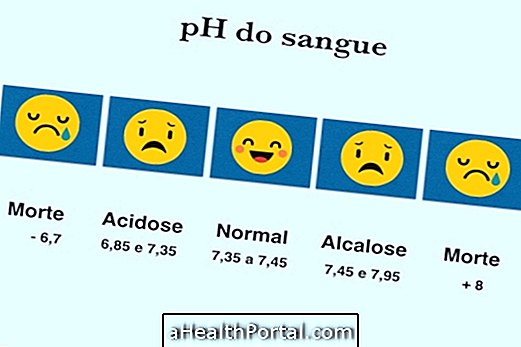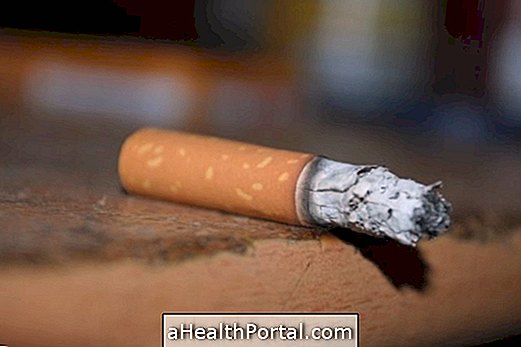The treatment for frieria can be done with the use of antifungal ointments, which should be applied daily until complete remission of symptoms.
Ointments may be purchased at the pharmacy and may be indicated by the pharmacist himself, but when they are not sufficient to cure the chill after 1 month of treatment performed correctly, it may be necessary to take antifungals in the form of tablets, which must be indicated by the doctor.
Footwash treatment
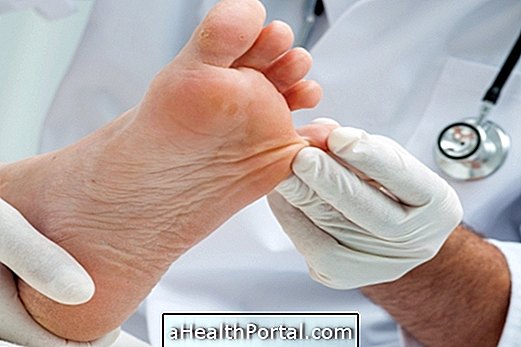
The treatment of footworms, also called "athlete's foot, " consists of applying an antifungal ointment daily such as terbinafine, isoconazole or ketoconazole 2 to 3 times a day for 4 weeks. Find out the names of other remedies for chilblains.
Before washing the ointment, it is important to wash the feet very carefully, avoiding to remove the loose skin, not to increase the wound, and to dry it very well, with a fluffy towel and hair dryer.
Some tips that may help with treatment are: avoiding closed shoes, synthetic stockings, plastic shoes, and wearing flip-flops or sandals that prevent perspiration in the feet.
When you have a foot wash, after applying the ointment, you need to wash your hands to prevent foot fungus from contaminating your hands as well.
Handwashing treatment

For the treatment of chilblains in the hands, it is recommended to use an antifungal ointment, such as Itraconazole, 3 to 4 times a day, or always after washing hands.
During treatment, it is important to keep the hands always clean and dry, and avoid placing them in the mouth or genital area, so that there is no contamination.
Why does not my bleach cure?
Treatment of the chilbler may take weeks or months, depending on how much the foot remains moist or in contact with contaminated objects. The person can use the ointment or take the antifungal remedy correctly and still not get cured if they do not follow the guidelines on the daily care.
Such care is essential to maintain the skin of the foot, especially between the toes, always very dry because the fungi need heat, moisture and a dark place to develop.
Fungi may be inside a shoe, for example, and so it may be helpful to wash shoes and shoes with hot water and allow to dry in the sun and only reuse when completely dry.

Essential care during treatment
In order to protect yourself or prevent the chilbler from returning, you must have certain daily care, for a lifetime, such as:
- Always wash the socks with hot water or wash with cold water and then iron each sock stocking;
- Always leave your shoes and shoes closed in the sun after use;
- Spray antiseptic talc within sneakers and closed shoes;
- Always wear flip-flops or open-toed sandals on hot days, where the feet perspire more easily;
- After bathing dry between the toes, if possible use a hair dryer also between the toes;
- Do not wear someone else's socks or closed shoes because they may be contaminated;
- If bathing in public places always use slippers during the bath to avoid contact with the floor that is probably contaminated;
- Change the socks whenever the foot is transpired;
- Never wear a wet shoe;
- Do not walk barefoot.
Another interesting tip is to fold a small piece of toilet paper and place it between the fingers with a cold wash, because the skin of that region becomes drier. If the paper gets wet, it should be replaced immediately.
Facts about the chilbler you need to know
Friction-causing fungus, or athlete's foot, is called Trichophyton, and it usually accustoms to human skin without causing any infection in the whole skin, but when it encounters a hot and humid place it can reproduce rapidly causing itching, irritation, redness and peeling of the skin.
Closed shoes, especially the tightest ones that compress the toes, as well as shoes or plastic sandals that promote perspiration are the biggest cause of chill because they create a perfect environment for their proliferation.
Possible Complications
When the chilblain remains for more than 3 weeks the fungus proliferates and can spread, being present between each finger. In addition, there may be secondary infections, since the skin that should be intact can allow the entry of viruses, bacteria and even parasites. A mild and more common complication is the body developing an allergy to the fungus that is present causing chills, in which case blisters may appear on the feet or hands.
Another common situation is that the fungal infection returns more intensely after apparently improving, which may indicate that there was some neglect in the treatment and the fungi have been able to proliferate again. Wearing a tight-fitting shoe with a thin stocking can be beautiful, but it is also one of the common causes of footwashing, so this habit should be avoided especially if the feet are perspired at some point in the day.
The onychomycosis can also occur if fungi can get to the nails.
Signs and improves or worsens
The signs of improvement are the decrease in symptoms, which can begin to be noticed about 7 days after the start of treatment. Already the signs of worsening are when the chill increases in size or spreads affecting other areas of the body.
